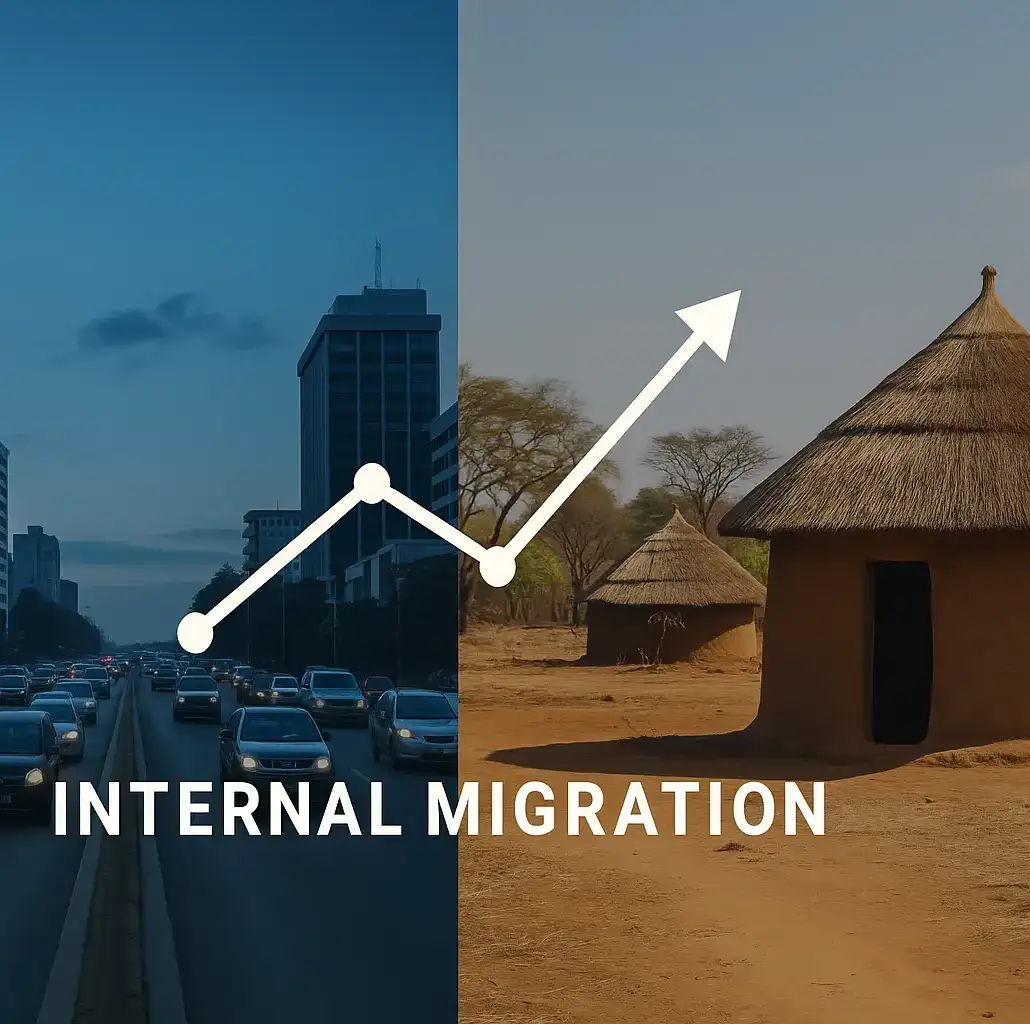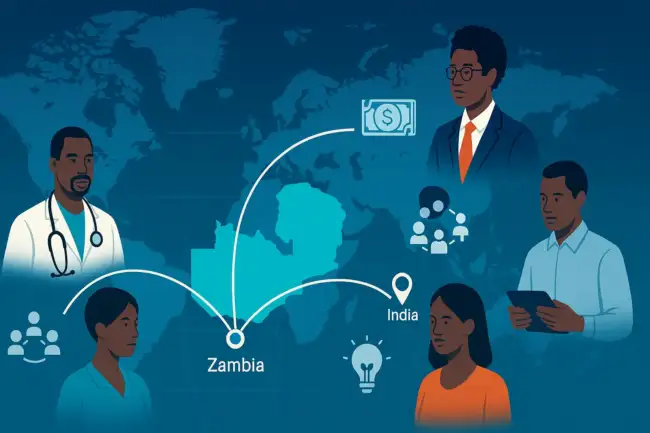Introduction
The migration of people within a country’s borders—known as internal migration—is a natural part of economic and social development. People move in search of better jobs, improved services, and a higher quality of life. In Zambia, however, the increasing shift of populations from rural to urban areas has led to a critical imbalance. Cities are bursting at the seams while rural communities are stagnating. This phenomenon, while common across developing countries, is exacerbated in Zambia by one major issue: the lack of timely, accurate, and comprehensive data on internal migration.
Internal migration is rarely in the spotlight. Yet, its effects are deeply felt across all sectors, from infrastructure to education to healthcare. Poorly tracked and poorly managed internal migration can lead to overburdened urban services, deepened rural poverty, and a planning vacuum that derails development goals.
This article examines Zambia’s internal migration crisis from a data and policy perspective. It highlights the consequences of neglecting migration flows and proposes concrete reforms that can help rebalance population dynamics for inclusive development.
Understanding Internal Migration
Internal migration refers to the movement of people from one administrative region to another within a country. In Zambia, these movements often take the form of rural-to-urban migration, urban-to-urban transfers, and, to a lesser extent, return migration from urban to rural areas.
The reasons behind internal migration vary widely:
- Economic opportunities (e.g., employment in cities)
- Access to better services (health, education, utilities)
- Environmental factors (e.g., climate change, droughts)
- Social and cultural reasons (e.g., marriage, family ties)
While these drivers are valid and often beneficial to individuals, they place uneven pressures on the receiving and sending areas.
The Data Deficit in Zambia
Despite its importance, Zambia does not currently have a dedicated system for tracking internal migration flows. Most of the data comes from the national census, conducted once every ten years, and occasional household surveys that do not cover the entire population or migration spectrum.
Key gaps include:
- Lack of real-time or periodic migration flow data
- No centralized institution mandated to manage internal migration data
- Fragmentation of administrative records, with limited use for policy or planning
This results in a situation where policymakers are unable to:
- Predict and manage urban population growth
- Understand who is migrating, why, and with what consequences
- Allocate resources equitably between urban and rural areas
Consequences of Neglecting Internal Migration
- Urban Overload
Zambia’s urban centres, particularly Lusaka and the Copperbelt, are experiencing rapid population growth without the corresponding infrastructure investment. Informal settlements, traffic congestion, housing shortages, and strained public services are all symptoms of unmanaged urbanisation. - Rural Underdevelopment
As young and economically active people migrate to urban centres, rural areas are left with an ageing population and a diminished workforce. This undermines agricultural productivity and widens the development gap. - Environmental Degradation
Unplanned urban growth contributes to deforestation, pollution, and strain on natural resources. Conversely, abandoned rural land may become mismanaged or susceptible to degradation. - Planning Vacuum
Without current data, urban planners and rural development agencies are flying blind. Infrastructure projects may be mismatched with population realities, resulting in waste and inefficiency.
The Need for Internal Migration Governance
The absence of a government agency specifically responsible for tracking and managing internal migration is a serious oversight. Although several ministries (e.g., Local Government, Housing, Community Development) have overlapping interests, no single institution is accountable for collecting, analysing, and applying migration data.
The government must:
- Designate a lead institution to coordinate internal migration efforts
- Build internal migration modules into existing statistical surveys
- Introduce flow monitoring systems to capture movement trends across districts and provinces
Policy Recommendations
- Establish a National Internal Migration Observatory
This institution would coordinate data collection, analysis, and dissemination related to internal population movements. It should partner with local governments, universities, and CSOs. - Revise the National Census Methodology
Integrate more frequent internal migration-related indicators in census planning, or conduct mid-decade intercensal surveys focused on population mobility. - Develop Community-Level Data Tools
Use mobile technology and GIS tools to collect data at the ward and district level, capturing real-time migration patterns. - Create Urban-Rural Development Incentives
Reduce the migration push-pull imbalance by enhancing the attractiveness of rural areas. This includes investing in:- Rural infrastructure (roads, power, water)
- Agricultural modernization and market access
- Rural education and healthcare facilities
- Engage Youth and Women in Rural Economies
Youth and women are the most mobile segments of the population. Targeted empowerment initiatives such as entrepreneurship training, land access reforms, and digital inclusion will reduce the pressure to migrate. - Introduce Mobility-Inclusive Planning Frameworks
Ensure that local and national development plans include migration forecasting and mobile population service provisions.
Case for Action: Lessons from Other Countries
Countries like Ghana, Kenya, and South Africa have made significant strides in monitoring internal migration by establishing dedicated national observatories and integrating migration indicators into urban planning.
In Rwanda, digital registries have been introduced to track migration across administrative boundaries in real-time. These tools have helped decentralize service delivery and plan settlements proactively.
Zambia can learn from such examples by tailoring digital solutions and decentralised data collection strategies to its national context.
Conclusion
Internal migration in Zambia is a silent force shaping the country’s future. Yet without the right data, it remains misunderstood and mismanaged. The consequences are clear: urban dysfunction, rural neglect, and policy failure.
A paradigm shift is needed—one that recognises internal migration as a developmental driver that must be understood, tracked, and strategically guided. With strong data systems, institutional coordination, and inclusive planning, Zambia can turn internal mobility into a tool for balanced growth.
Disclaimer: This article is intended for informational purposes and does not constitute legal advice. The views expressed are those of the author and do not necessarily reflect the position of YMS Legal.



